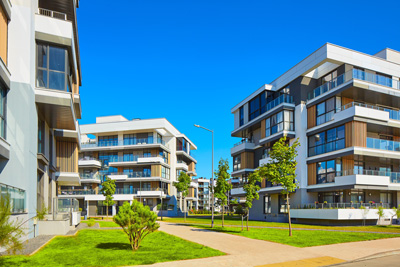Zeitgeist - News Highlights
Record Apartment Supply Creating Buying Opportunities
According to RealPage Analytics, a record 588,900 new apartment units were delivered in 2024. It’s taking an average of 16 months for these communities to reach stabilization (defined as 85% occupancy), compared to just 12 months in 2019. This extended lease-up period is putting pressure on owners and developers who underwrote faster absorption and are now facing higher debt service costs and maturing loans.
This pressure is also reflected in leasing economics. Concessions have returned in a meaningful way, with 8.5% of units offering incentives – up from 7.5% a year earlier and approaching levels last seen during the early pandemic. While the average concession remains relatively modest – roughly one month free (though two months’ free are common in certain oversupplied markets) – the growing prevalence underscores the pressure operators face in today’s oversupplied environment.
To preserve occupancy, operators are leaning heavily on resident retention. National renewal rates climbed to 54.5% by the end of 2024, well above the 2010-2019 average of 50.7%. Rather than compete directly with aggressive lease-up concessions, many landlords are focused on keeping current residents in place – a clear signal that elevated supply is reshaping operational strategy.
Although new development is expected to slow, supply levels aren’t projected to normalize until mid-2026. The combined effects of short-term softness in leasing fundamentals and a difficult refinance environment are creating a unique opportunity for investors. High-quality assets – many purchased at peak values or recently built – are now coming to market at discounts to both peak values and replacement cost, offering attractive entry points for buyers focused on long-term value. Pathfinder Fund IX is seeking to acquire properties from owners who purchased at the peak in 2021-2022 using three-year, floating rate loans – which they’re unable to finance in the current, higher interest rate environment.
Stronger Growth in Suburbs
 Today’s renters are increasingly bypassing city centers for the suburbs. A new report from Point2Homes, an online rental listing platform, shows renter households in suburban areas are growing faster than in urban cores across many major U.S. metros.
Today’s renters are increasingly bypassing city centers for the suburbs. A new report from Point2Homes, an online rental listing platform, shows renter households in suburban areas are growing faster than in urban cores across many major U.S. metros.
Census data reveals 203 U.S. suburbs within metropolitan areas now have a majority-renter population, representing six million households and an increase of over 230,000 (4%) since 2018. In 15 U.S. metro areas, the suburban renter population has more than doubled in the last five years.
The shift reflects changing renter priorities – especially with remote work here to stay – including space, privacy and affordability over walkability and downtown amenities. And developers are responding by directing capital toward suburban communities with lower densities, larger floorplans and plenty of open space. In parallel, demand for single-family home rentals in suburban areas is rising and institutional property owners are increasingly allocating a portion of their future development pipeline towards build-to-rent (BTR) communities to cater to this demographic.
According to Point2Homes’s report, this is not a short-term trend but a broader shift in how Americans live, driven by remote work, decreasing homeownership and a desire for lower density and safer living environments.
Share this Article
IN THIS ISSUE
PATHFINDER MULTIFAMILY OPPORTUNITY FUND IX, L.P.
CHARTING THE COURSE
How the AI Tsunami Will Reshape Our World in Short Order
FINDING YOUR PATH
Hitting The Peak of Apartment Deliveries
GUEST FEATURE
Grading Interest Rate Predictions
ZEITGEIST
News Highlights
TRAILBLAZING
Sundance Apartments, Milton (Seattle), WA
NOTABLES AND QUOTABLES
Innovation
